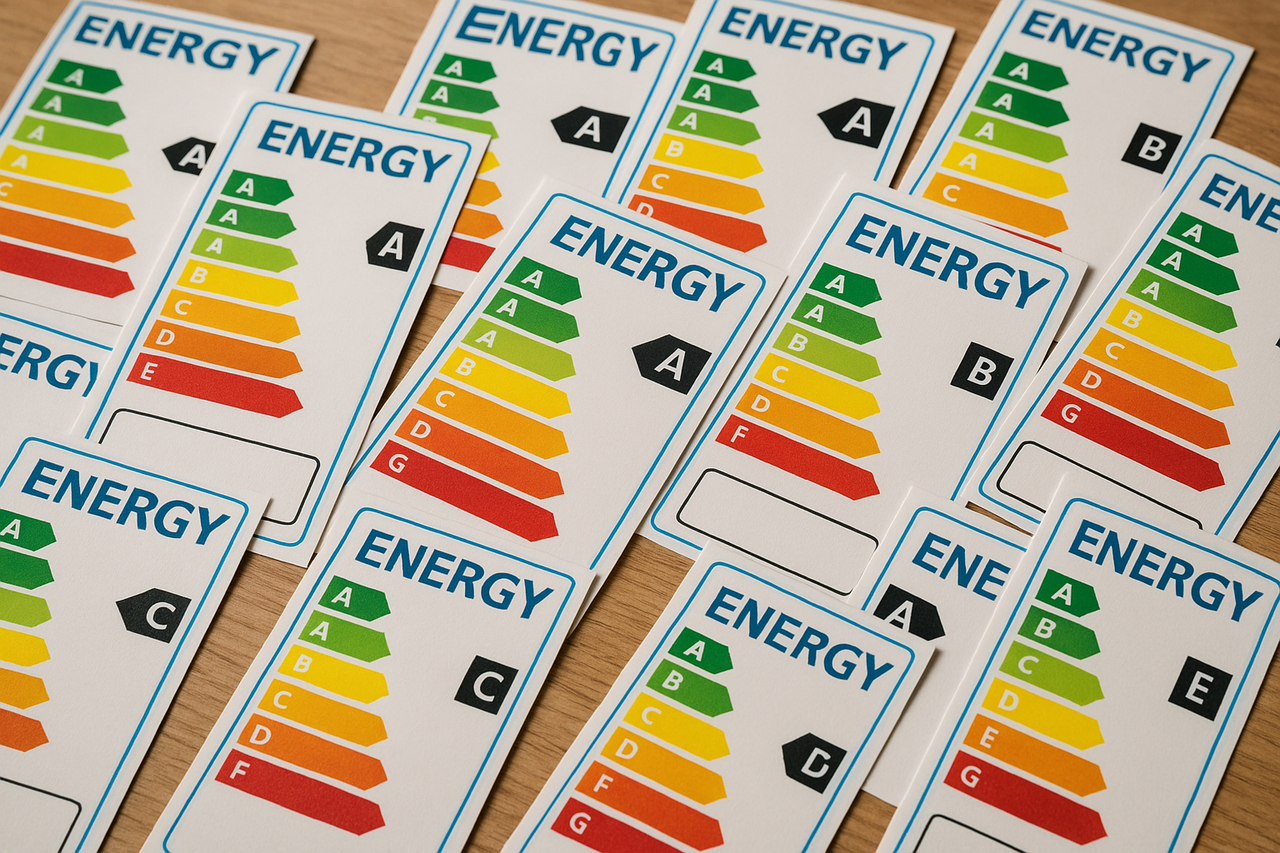Energy labels are an essential tool for consumers, providing clear information about the energy efficiency of appliances. Understanding these labels can help you make informed decisions that save both energy and money. In this guide we will explain what energy labels are, how they work, and why they matter - also we’ll highlight how we provide this data slightly differently than other retailers and our reasoning for this.
tl;dr
Energy labels provide standardised data on how much energy (and water if applicable) a product uses typically for every 100 cycles, they’re available to download from most product pages as PDF’s here at Renew 2 U and you can use the data provided in these labels to make educated decisions on the appliance you’re considering to purchase.
What Are Energy Labels?
Essentially, energy labels are standardised ratings displayed on products to indicate their energy consumption and efficiency. They are typically required by law in many countries including here in the UK, they provide a simple way to compare different models within the same category. These labels help consumers identify products that use less energy and contribute to reducing carbon footprints.
How Do Energy Labels Work?
Energy labels use a rating scale, usually represented by a combination of colours and letters. The most common format includes:
- A to G scale: ‘A’ represents the most energy-efficient products, while ‘G’ signifies the least efficient. Note that for some appliances such as Tumble Dryers still have labels with ratings between A+ and A+++, these will be phased out as something having a better energy rating than A is nonsensical.
- Colour coding: Green indicates high efficiency, while red denotes poor efficiency.
- Annual energy consumption: Displayed in kilowatt-hours (kWh), showing estimated yearly usage based on typical operation. The only caveat for this is Dishwashers as typically a year's usage is 100 cycles but almost no one uses their dishwasher only 100 times a year so we increase the energy and water consumption for these appliances to 280 cycles per annum. If you want to learn the original energy consumption you can click on either the energy label icon or the link in the product specifications.
- Additional information: Some labels include water consumption (for dishwashers and washing machines), noise levels, and performance features.
Why Are Energy Labels Important?
Energy labels provide several key benefits:
- Cost savings: More efficient appliances reduce electricity bills over time.
- Environmental impact: Choosing energy-efficient products helps lower greenhouse gas emissions.
- Informed choices: Consumers can easily compare models to find the best option for their needs.
Types of Energy Labels
Here in the UK you’ll come across two standards for energy labels, the EU Energy Label and the UK Energy Label, they are both essentially the same as the UK Energy Label was copied from the EU specification and introduced after Brexit - we here at Renew 2 U typically provide just the EU labels, simply because they’re indexed, widely available and their ID’s are used elsewhere making them more efficiency to deploy.
Examples




Conclusion
Understanding energy labels allows you to make more eco-friendly and cost-effective decisions when purchasing appliances. By choosing refurbished products you are already reducing your carbon footprint and if you choose to factor in efficiency ratings, you can make further reductions through lower energy consumption and save even more money in the long run.
By familiarising yourself with energy labels, you take a step towards a more sustainable future while ensuring that your home runs efficiently and economically.
Label Availability
Energy labels are widely available throughout the store for both Refrigeration and Laundry appliances - some products may not have one available as we didn’t originally capture this data, also we have not made them available for Cooking appliances but plan to retrospectively update these overtime.
If you come across any products which doesn’t have a downloadable PDF energy label available then get in touch with us and we’ll both provide you with the label and update the product to support it.


